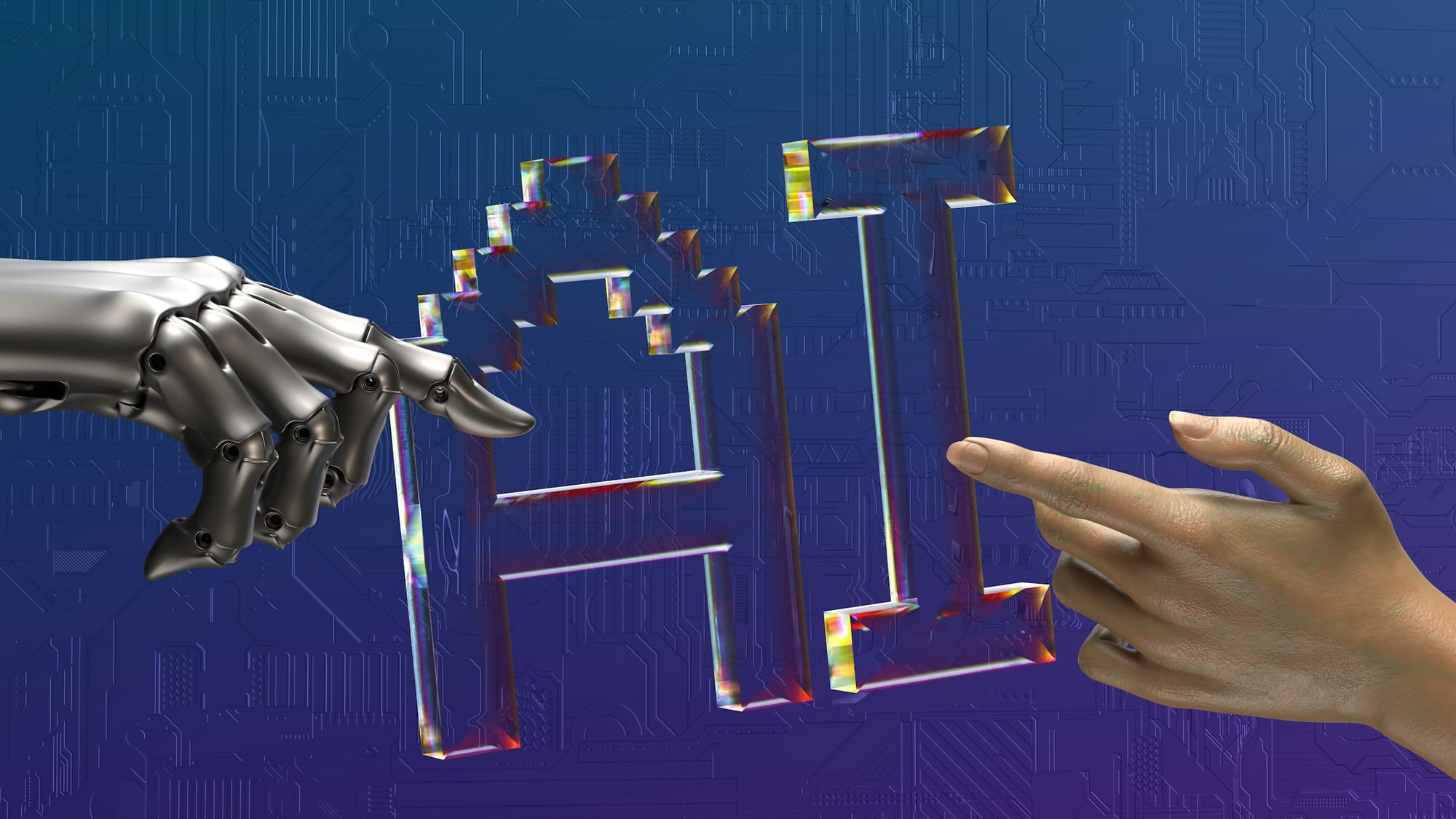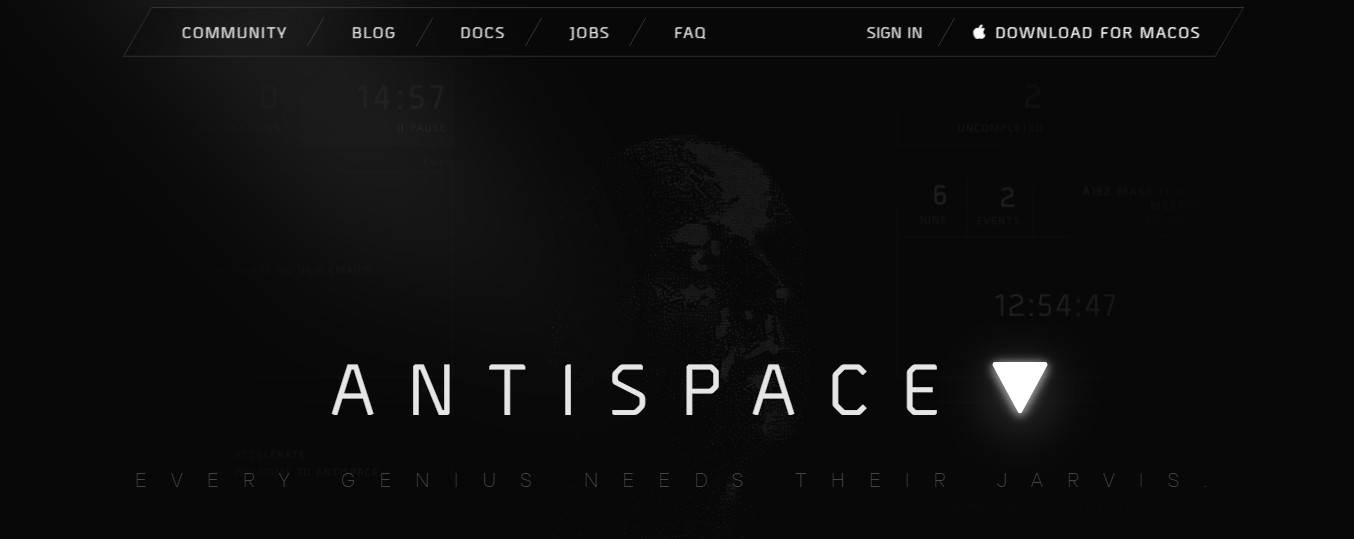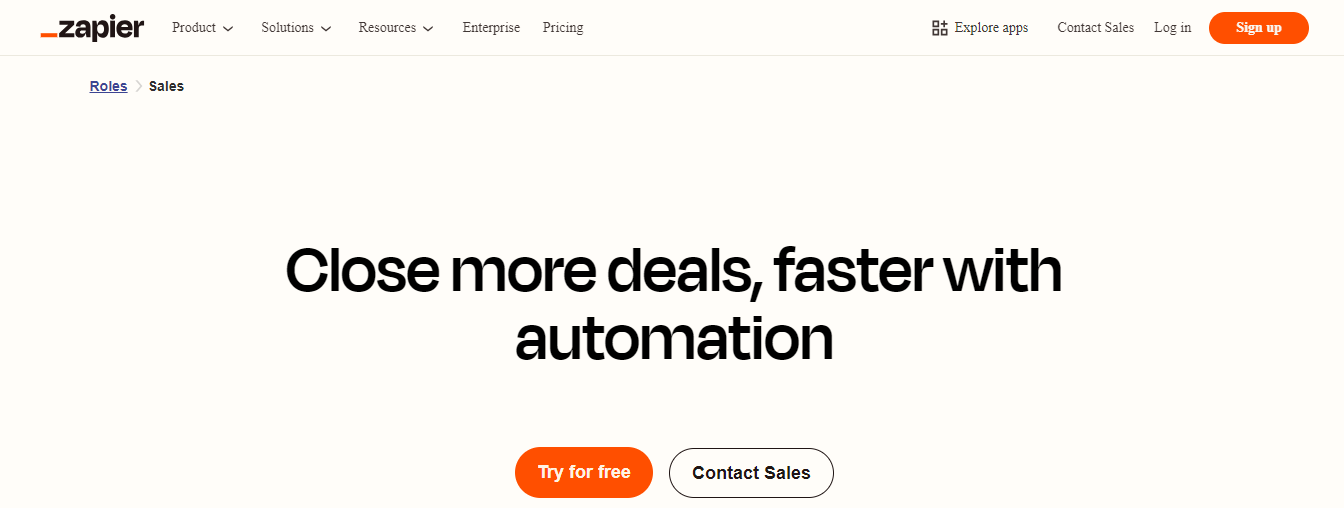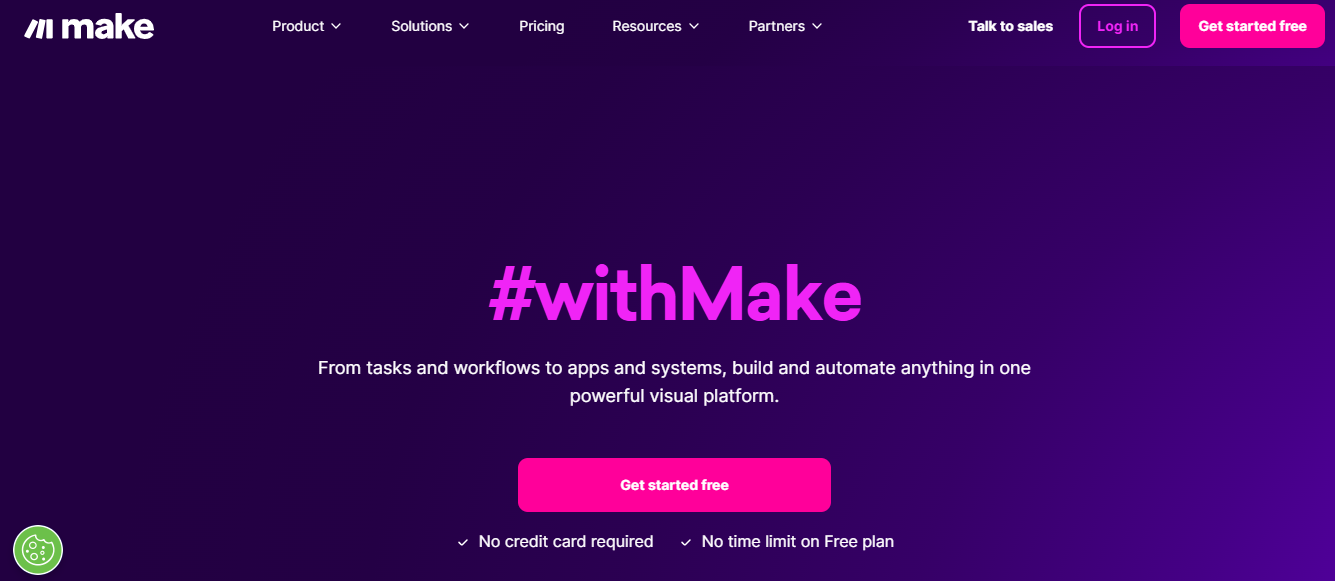Imagine this. You spend hours every week on repetitive tasks that don’t need your attention, or anyone’s attention, for that matter. You get it. They’re dull and tedious. But you also know they’re crucial for keeping your projects on track. You need to eliminate them to focus on your work's exciting, valuable parts. This is where AI workflows come in. They can help you take automating tedious tasks to the next level. This article will walk you through how they work and their benefits, provide actionable steps for implementing AI workflows into your productivity workflow, and introduce you to the best tools to get started.
Antispace's AI-based productivity operating system is an excellent resource for achieving your goals. It can help you learn about AI workflows, their benefits, implementation, and the best tools to get started while simplifying your productivity workflow.
What are AI Workflows?

AI workflows are intelligent, automated processes that use artificial intelligence to carry out tasks traditionally managed by humans. These workflows integrate machine learning, natural language processing, and data analytics to complete tasks and learn and improve over time. Where traditional automation follows fixed rules and scripts, AI workflows adapt to changing inputs and business environments.
They handle unstructured data, like emails, chat messages, or PDFs, and identify patterns, making real-time decisions. This dynamic approach means AI can manage complex workflows such as approvals, data extraction, or customer service escalations without constant human input.
Automating Management for Impact
According to Gartner, by 2026, 20% of organisations will rely on AI to automate management functions. This reflects a broader trend that AI is not just a cost-cutting tool but a strategic asset that can drive efficiency, accuracy, and scalability. It frees human talent from repetitive work, allowing teams to focus on higher-value activities.
Essential Tools for Smarter Business Operations
In practice, AI workflows are used across departments and industries. They might automate customer inquiry routing in real time based on urgency and sentiment, generate financial reports by extracting data from multiple systems, or manage end-to-end logistics by predicting demand and adjusting supply chains accordingly. As organisations deal with increasing complexity, AI workflows are no longer optional. They’re becoming essential. AI workflows are transforming how businesses operate in a digital-first world by reducing errors, accelerating response times, and ensuring consistent decision-making.
Related Reading
- What Is Productivity Software?
- Pyramid of Productivity
- Small Business Intelligence
- Using AI to Enhance Business Operations
- Methods to Improve Productivity in Operations Management
Components of AI Workflow Automation

APIs: The Bridges Between Tools
Application Programming Interfaces (APIs) allow different systems and software to connect and share data in real time. In AI workflows, APIs bridge AI tools and existing business platforms, enabling seamless integration, data exchange, and task execution across CRMs, ERPs, and communication platforms.
Business Process Automation: The First Step to AI Workflows
Business Process Automation (BPA) streamlines routine tasks such as:
- Approvals
- Scheduling
- Data entry
- Report generation
When combined with AI, BPA goes beyond rule-based logic by incorporating decision-making capabilities, allowing for dynamic task routing and intelligent error handling.
Generative AI: The Copywriter of AI Workflows
Generative AI creates content based on inputs and learned data patterns, such as text, images, code, or reports. In workflows, it can draft emails, generate summaries, write reports, or even automate parts of creative and customer-facing processes, adding value where traditional automation falls short. McKinsey predicts that gen AI might automate up to 10% of all tasks in the US economy.
Intelligent Automation: The Brain of AI Workflows
Intelligent Automation combines robotic process automation (RPA) with AI technologies to handle complex, end-to-end business processes. This component allows systems to automate structured tasks and adapt to exceptions, variations, and human-like decisions using cognitive capabilities.
Machine Learning: The Flexible Friend of AI Workflows
Machine Learning (ML) enables systems to learn from data, identify trends, and make predictions. Within a workflow, ML can power recommendations, risk scoring, customer segmentation, demand forecasting, and much more, refining processes with every interaction.
Natural Language Processing: The Translator of AI Workflows
Natural Language Processing (NLP) allows AI to understand and interact using human language. It enables chatbots to respond intelligently, systems to interpret emails and documents, and voice interfaces to trigger workflow actions, bridging human communication with automated action.
Optical Character Recognition: The Data Extractor of AI Workflows
Optical Character Recognition (OCR) extracts data from scanned documents, images, and PDFS. It's instrumental in automating paperwork workflows, such as invoice processing, contract management, and identity verification, by converting unstructured data into machine-readable formats.
Effortless Productivity with Antispace
Antispace transforms your daily workflow with an AI-powered, gamified productivity operating system. Our platform seamlessly integrates with your essential tools, Email, Calendar, and Notes, while our AI assistant handles everything from email management to task organization.
We've built intelligence into every aspect of your workflow:
- Smart email responses
- Automated calendar management
- Enhanced note-taking
- Streamlined task coordination
Your AI Executive Assistant for Effortless Productivity
Antispace is your virtual executive assistant. It reduces context switching and automates routine tasks, letting you focus on what matters while our AI handles the rest. Whether you're brainstorming ideas, managing communications, or coordinating projects, Antispace turns productivity from a chore into an engaging experience.
Get started for free with one click today.
Benefits of AI Workflow Automation

Integrating AI into your marketing workflows can save time. Research shows that marketers using AI save an average of 12.5 hours per week. That’s nearly 26 working days per year. What could your team do with an extra month? Timesaving benefits vary depending on where you incorporate AI into your processes.
For instance, using AI to automate parts of content production can save you time drafting and editing, which are often the most time-consuming parts of the process. Identify time-consuming tasks before you integrate AI significantly into your process.
Make Smarter Decisions with AI Insights
Today’s marketers have access to more data than they can realistically manage. AI is especially good at ingesting data from the many sources in your organisation’s workflow, analysing it for patterns, and delivering actionable insights to make things happen.
Targeting and customer experience personalization are ripe fields for AI disruption. Imagine AI handling user data collection, processing, and insight generation. You receive a “here’s what to do next” list and can develop and execute campaigns to match.
Scale Your Efforts Without the Stress
Demands on marketers’ time and energy are soaring. Recent surveys found that over 60% of marketers feel overwhelmed by what their jobs ask of them. Marketers could always use an extra pair of hands, and that’s now started to include AI hands. Marketers can use AI to automate repetitive or predictable tasks like data collection and analysis or social media post drafting.
AI can use all the data it analyzes to automatically personalize outbound messages, helping you reach people more effectively without manual effort. AI doesn’t replace the human marketer, but it does help us do more, even if your marketing budget is stagnating.
Related Reading
- Factors of Productivity
- Productivity Software Examples
- Microsoft Productivity Tools
- Improve Focus and Productivity
- Productivity Tools for VAs
- Best Free AI Tools
- Best AI Tools for Math Teachers
10 Best AI Workflow Tools for Your Business
1. Antispace

Antispace transforms your daily workflow with an AI-powered, gamified productivity operating system. Our platform seamlessly integrates with your essential tools, Email, Calendar, and Notes, while our AI assistant handles everything from email management to task organization.
We've built intelligence into every aspect of your workflow:
- Smart email responses
- Automated calendar management
- Enhanced note-taking
- Streamlined task coordination
Your AI Executive Assistant for Effortless Productivity
Antispace is your virtual executive assistant. It reduces context switching and automates routine tasks, letting you focus on what matters while our AI handles the rest. Whether you're brainstorming ideas, managing communications, or coordinating projects, Antispace turns productivity from a chore into an engaging experience.
Get started for free with one click today.
2. Monday work management

Best for mid-market and enterprise teams looking to automate across departments with an intuitive platform that connects strategy to execution. With a scalable AI workflow builder that connects strategy to execution, Monday work management helps reduce operational costs by easily automating complex workflows.
The platform combines visual task management with integrated AI features like sentiment detection, auto-categorization, and instant summarization, all without code. AI Blocks make it easy for business users to add automation logic to existing processes and improve execution across the board.
3. Microsoft Power Automate

Best for organizations already using Microsoft tools that want to connect legacy systems and cloud apps through AI-driven automation.
Power Automate combines robotic process automation (RPA) and digital process automation (DPA), allowing teams to automate across systems with minimal technical overhead. With tight integration into Microsoft 365 and Azure, it’s a strong choice for IT-heavy environments and enterprise users.
4. Zapier

Best for non-technical teams looking to automate app connections quickly and with minimal setup. Zapier enables simple automation across 6,000+ apps. Its AI-powered features help teams build automations using natural language, making it easy to automate lead handoffs, customer messages, and task updates without technical help.
5. Bardeen

Best for teams working in the browser that need fast automations for repetitive web tasks. Bardeen runs directly in Chrome, allowing users to automate data scraping, meeting summaries, or follow-up tasks. It’s a go-to for operations and research-heavy teams that want fast execution from the browser.
6. Make

Best for visual automation builders that need advanced control across SaaS tools. Make (part of Celonis) is a drag-and-drop builder for designing end-to-end automation across platforms like:
- Airtable
- HubSpot
- Notion
The interface is visual, yet powerful, allowing conditional logic, branching, and multi-step sequences. AI modules expand their use cases to include content creation, translations, and more.
7. MindStudio

Best for teams building tailored AI pipelines with custom language models and plugin support. MindStudio helps teams connect internal knowledge and AI with a flexible automation engine. It supports LLM customization, plugin development, and scalable API integration, making it a strong choice for organizations needing modular AI solutions with deep control.
8. Dify

Best for developers and teams building customizable AI applications with scalable enterprise features. Dify is an open-source LLMOps platform that simplifies the development and deployment of AI agents and automations.
It is designed for flexibility and offers visual tools to build, orchestrate, and monitor generative AI processes while supporting integration with private knowledge bases and external APIs.
9. SmythOS

SmythOS is best for building AI-powered agents and logic flows for operations, sales, and internal support. It enables teams to create autonomous AI agents interacting with tools, data, and logic in real time. It’s great for automating processes like lead qualification or ticket follow-ups, especially when human-like reasoning is required.
10. Workato

Best for cross-functional teams automating workflows across sales, marketing, HR, finance, and support. Workato is a powerful no-code integration and automation platform that connects over 1,000 business apps, enabling teams to build complex, event-driven automations. It’s ideal for organizations looking to scale processes without custom code or IT bottlenecks.
How to Implement AI Workflow Automation

Before diving into AI workflow automation, taking stock of your existing workflows is a good idea. This will help you identify bottlenecks, inefficiencies, and opportunities for improvement.
Processes with repetitive, time-consuming tasks are great candidates for automation, while processes that require human input can still benefit from some AI tools. Use a workflow diagram or process flow chart to visualize your workflows step-by-step and see which parts best suit automation.
Choose the Right Automation Platform
Choosing an AI-powered automation platform is a big decision because each has its own tools and capabilities. Low- and no-code platforms can be good choices because they allow you to customize your workflows without coding.
Still, you’ll want to make sure that the AI tools you use are a good fit for your business needs and your industry and that you have a pricing model that you can afford.
Integrate Your Software for an Effective AI Workflow Automation Strategy
Next, link your automation platform to tools you already use, such as the CRM (customer relationship management) software you use to store customer data. This will allow your AI software to perform tasks across your entire technology ecosystem. Most automation platforms will enable you to connect with other apps using an API or a straightforward integration.
Add Your Data
AI-powered tools are only as good as the information you give them. The more data you have to work with, the more you can count on your AI tools to make accurate decisions that take the entire picture of your organization into account.
A data management strategy is crucial, especially if you’ll be incorporating multiple data sets with redundant or duplicate data. For example, you may want to digitize paper documents and reformat outdated spreadsheets to centralize your data assets and break down data silos.
Refine Your Workflows
Track your metrics to ensure that your AI workflow automation software works as planned and adds value to your business.
If something isn’t working, continue to refine your business processes until you get the results you’re looking for. You can use business process improvement (BPI) strategies to identify problems and make continuous, incremental workflow changes.
Related Reading
- AI Tools for Finance
- AI Tools for Small Business
- AI Tools for Business Analyst
- Team Productivity Apps
- Small Business Productivity Tools
- Enterprise Productivity Solutions
- Personal Productivity Tool
Let Our AI-based Productivity Operating System Handle Your Boring Work
Antispace completely transforms workflows with integrated AI capabilities that automate tedious tasks like email management, calendar organization, note-taking, and task coordination. Instead of wasting time and energy on redundant chores, Antispace lets you focus on your team, clients, and overall goals. Not only does this reduce stress, but it also helps you get organized and improve your performance.
Get Ready to Level Up Your Productivity
Antispace uses gamification to make productivity fun. When you start using Antispace, you’ll create a personalized avatar and unlock different achievements as you complete tasks and organize your workflow. This engaging approach helps users overcome distractions and enhances overall performance.